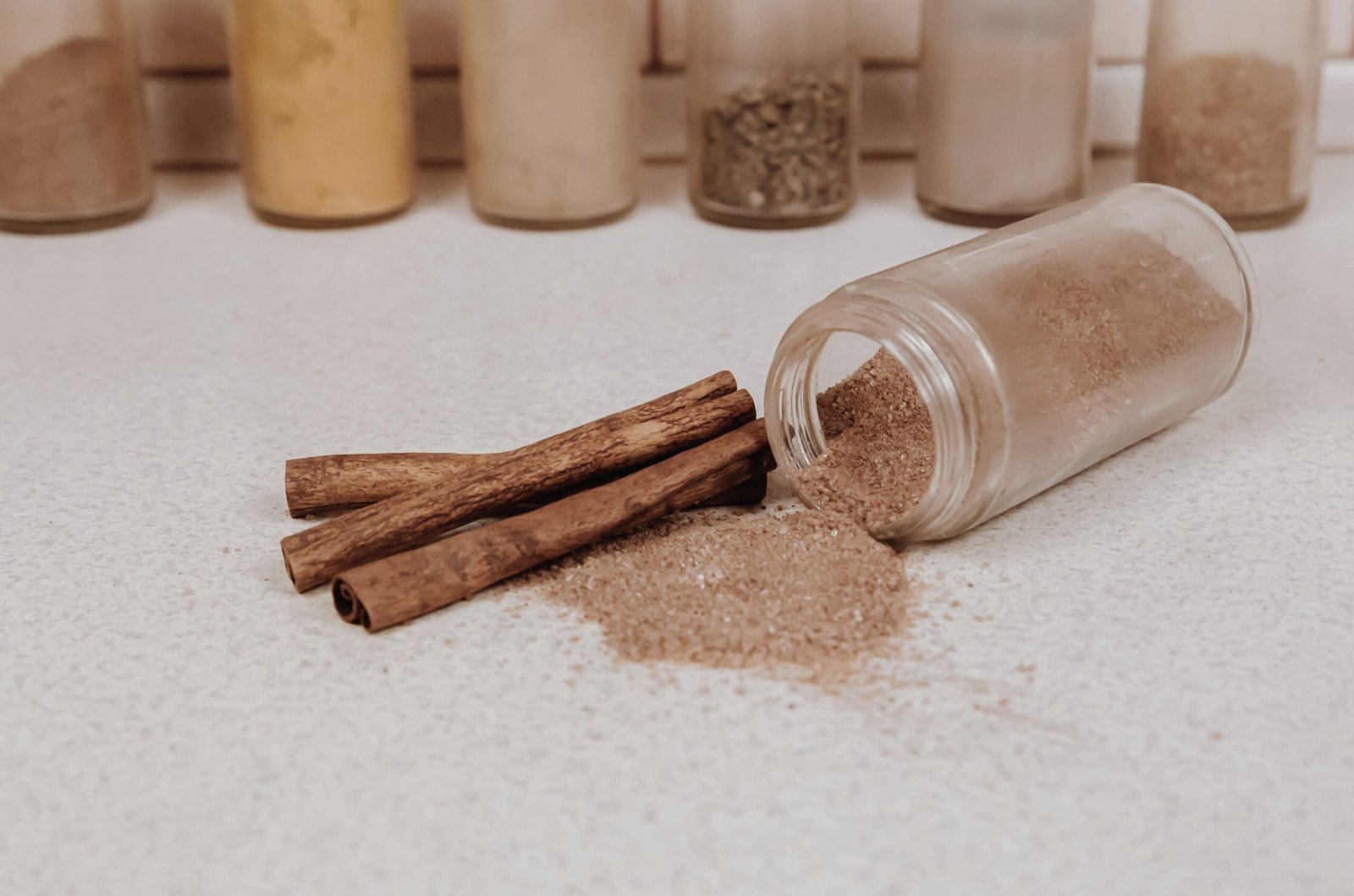Indian Spices
Cinnamon is a spice obtained from the inner bark of several tree species from the genus Cinnamomum. Cinnamon is used mainly as an aromatic condiment and flavouring additive in a wide variety of cuisines, sweet and savoury dishes, breakfast cereals, snack foods, bagels, teas, hot chocolate and traditional foods. The aroma and flavour of cinnamon derive from its essential oil and principal component, cinnamaldehyde, as well as numerous other constituents including eugenol.
Description
Cinnamon is the name for several species of trees and the commercial spice products that some of them produce. All are members of the genus Cinnamomum in the family Lauraceae. Only a few Cinnamomum species are grown commercially for spice. Cinnamomum verum (alternatively C. zeylanicum), known as “Ceylon cinnamon” after its origins in Sri Lanka (formerly Ceylon), is considered to be “true cinnamon”, but most cinnamon in international commerce is derived from four other species, usually and more correctly referred to as “cassia”: C. burmanni (Indonesian cinnamon or Padang cassia), C. cassia (Chinese cinnamon or Chinese cassia), C. loureiroi (Saigon cinnamon or Vietnamese cassia), and the less common C. citriodorum (Malabar cinnamon).


History
Cinnamon has been known from remote antiquity. It was imported to Egypt as early as 2000 BC, but those who reported that it had come from China had confused it with Cinnamomum cassia, a related species. Cinnamon was so highly prized among ancient nations that it was regarded as a gift fit for monarchs and even for a deity; an inscription records the gift of cinnamon and cassia to the temple of Apollo at Miletus. Its source was kept a trade secret in the Mediterranean world for centuries by those in the spice trade, in order to protect their monopoly as suppliers.
Cinnamomum verum, which translates from Latin as “true cinnamon”, is native to India, Sri Lanka, Bangladesh and Myanmar. Cinnamomum cassia (cassia) is native to China. Related species, all harvested and sold in the modern era as cinnamon, are native to Vietnam (“Saigon cinnamon”), Indonesia and other southeast Asian countries with warm climates.
In Ancient Egypt, cinnamon was used to embalm mummies. From the Ptolemaic Kingdom onward, Ancient Egyptian recipes for kyphi, an aromatic used for burning, included cinnamon and cassia. The gifts of Hellenistic rulers to temples sometimes included cassia and cinnamon.
Specification
Product Name | Cinnamon |
Origin | Native to Ceylon, Sri Lanka |
Family | Laurels |
Binomial name | Cinnamomum verum |
Feature and Characteristic
Color | warm, brownish-orange |
Taste and Smell | A sweet and woody flavour, cinnamon has a slight citrusy note, and its spicy taste is often likened to the powerful punch of cloves |
Nutritional Information per 100 g (Approx)
Principle | Nutrient Value | Percent of RDA |
Energy | 247 Kcal | 12% |
Carbohydrates | 50.59 g | 39% |
Protein | 3.99 g | 7% |
Total Fat | 1.24 g | 4.50% |
Cholesterol | 0 mg | 0% |
Dietary Fiber | 53.1 g | 133% |
Vitamins |
|
|
Folates | 6 µg | 1.50% |
Niacin | 1.332 mg | 8% |
Pantothenic acid | 0.358 mg | 7% |
Pyridoxine | 0.158 mg | 12% |
Riboflavin | 0.041 mg | 3% |
Thiamin | 0.022 mg | 2% |
Vitamin A | 295 IU | 10% |
Vitamin C | 3.8 mg | 6% |
Vitamin E | 10.44 mg | 70% |
Vitamin K | 31.2 µg | 26% |
Electrolytes |
|
|
Sodium | 10 mg | <1% |
Potassium | 431 mg | 9% |
Minerals |
|
|
Calcium | 1002 mg | 100% |
Copper | 0.339 mg | 38% |
Iron | 8.32 mg | 104% |
Magnesium | 60 mg | 15% |
Manganese | 17.466 mg | 759% |
Phosphorus | 64 mg | 9% |
Zinc | 1.83 mg | 17% |
Zinc |
|
|
Phyto-nutrients |
|
|
Carotene-ß | 112 µg | — |
Crypto-xanthin-ß | 129 µg |
|
Lutein-zeaxanthin | 222 µg | — |
Lycopene | 15 µg | — |

Use and Benifits
CINNAMON USES & BENEFITS :
- Culinary Medicinal Benefits - Cinnamon is rich in antioxidants and has anti-inflammatory properties. It is also said to cut the risk of heart diseases.
- Culinary Uses - Cinnamon is used in several dishes for its unique flavour and aroma.
- If you wish to export Cinnamon, SFB is one of the leading exporters in India. When you export products, it comes with several responsibilities including documentation, checking if the product meets the quality and health standards and so on.
- SFB, the best importers from India, will assist you with every step on the way. SFB will make sure that your products reach every corner of the world fresh and safe!
